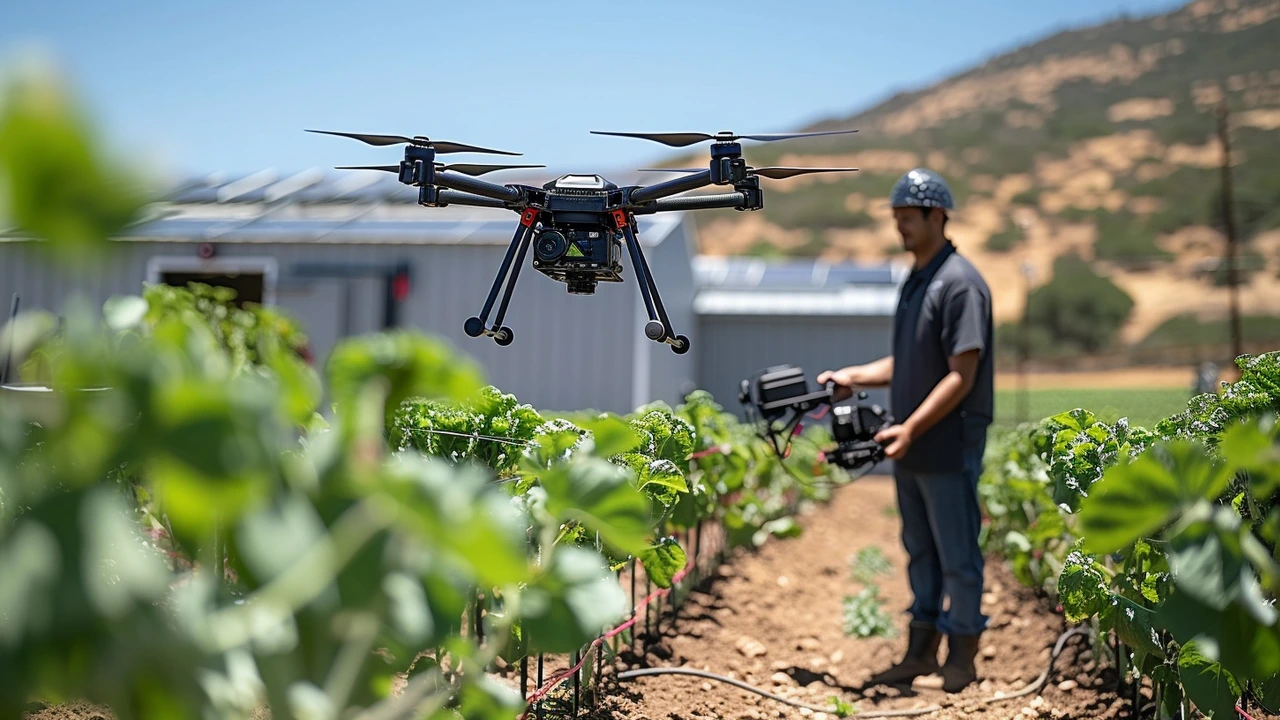Agri‑Tech Innovation: How Smart Tech Is Changing Farming Today
Ever wonder why the next big thing in food isn’t a new seed but a tiny sensor stuck in the soil? Farmers are swapping out guesswork for data, and the results are startling. By connecting fields to the cloud, growers can see exactly what each plant needs, when it needs it, and how to get the most out of every drop of water.
Why Farmers Are Turning to Smart Tools
First off, cost matters. Traditional farming can waste acres, water, and fertilizer because you’re working with averages, not specifics. A smart moisture sensor tells you the exact moisture level at root depth, so you only irrigate when the plant really needs it. That alone can cut water use by 30 % in many regions.
Second, risk is easier to manage. Weather apps are great, but they don’t tell you how a sudden frost will affect a single row of vines. AI models now ingest weather forecasts, satellite images, and historic yield data to predict loss before it happens. When a forecast looks risky, the system can suggest protective actions – like covering crops or adjusting planting dates.
Finally, labor shortages are real. Many farms can’t find enough hands for manual scouting. Drones equipped with multispectral cameras fly over fields in minutes, spot pest hotspots, and send alerts straight to a farmer’s phone. No more climbing ladders or walking endless rows – the data does the heavy lifting.
Key Technologies Shaping the Future of Agriculture
IoT Sensors – Small devices that measure soil pH, temperature, humidity, and nutrient levels. They transmit data via low‑power networks, giving a real‑time picture of field health.
AI & Machine Learning – Algorithms crunch sensor streams, satellite photos, and market prices to suggest optimal planting schedules, fertilizer blends, and harvest times. The more data you feed in, the smarter the advice gets.
Drones & Robotics – From aerial spraying to autonomous tractors, robots reduce labor costs and increase precision. A drone can spray herbicide only where weeds are detected, slashing chemical use.
Blockchain Traceability – Consumers care where their food comes from. Blockchain records each step – seed, field, transport – creating a tamper‑proof story that boosts brand trust.
Vertical Farming & Hydroponics – Growing crops in stacked layers or nutrient‑rich water eliminates the need for large plots. LED lighting and climate control let growers produce year‑round, close to urban markets.
All these tools work best when they talk to each other. A unified platform pulls sensor data, drone imagery, and market analytics into one dashboard. That’s where the farmer makes decisions – not from spreadsheets, but from a clear, visual story.
What does this mean for you, whether you’re a hobbyist gardener or a large‑scale producer? Start small. Put a moisture sensor in a test plot, watch the data, and adjust irrigation. Once you see savings, add a drone‑based scout or an AI‑driven recommendation engine. The tech is modular, so you can scale at your own pace.Bottom line: Agri‑tech isn’t a buzzword; it’s a practical toolbox that makes farms more profitable, resilient, and sustainable. By embracing sensors, AI, and automation, you’re not just keeping up with the latest trend – you’re future‑proofing your harvest.
Ready to try a smart sensor or a drone demo? The best time to experiment is now, because every data point you collect today will pay off in better yields tomorrow.

Artificial Intelligence: The New Age of Sustainable Farming
Hey there, in this post we're diving into the new age of sustainable farming, brought to us by Artificial Intelligence. Isn't it incredible that technology is revolutionizing even farming? Let's explore how AI is paving the way for smarter, more efficient, and eco-friendly agriculture. This is certainly a time to embrace such technological innovations that are helping us nurture our Earth while feeding our burgeoning population. So buckle up, we're about to delve into the fascinating fusion of technology and agriculture!